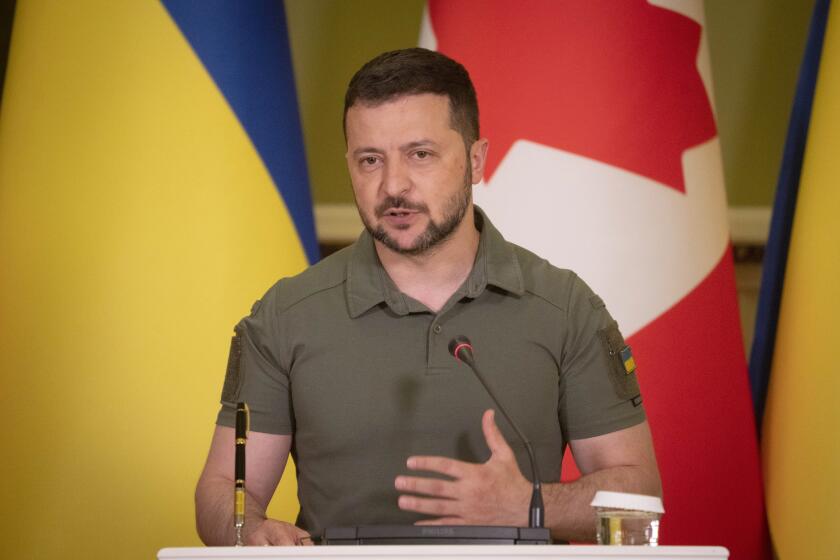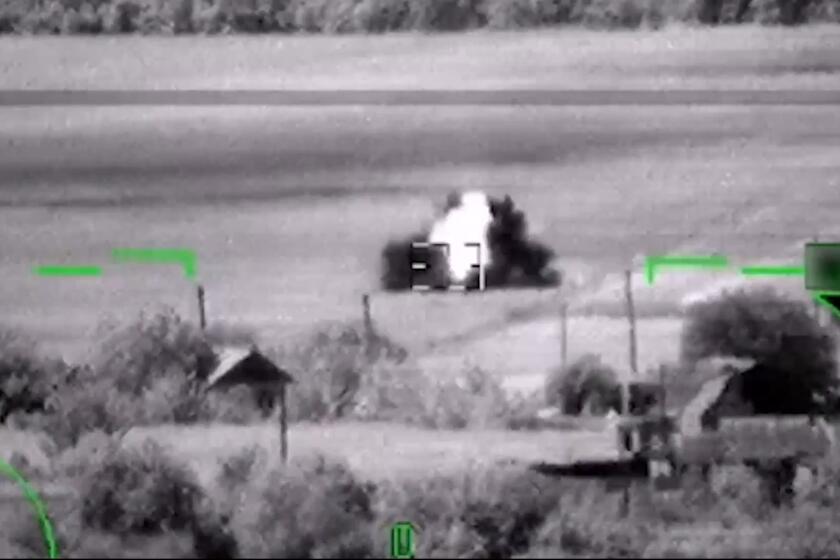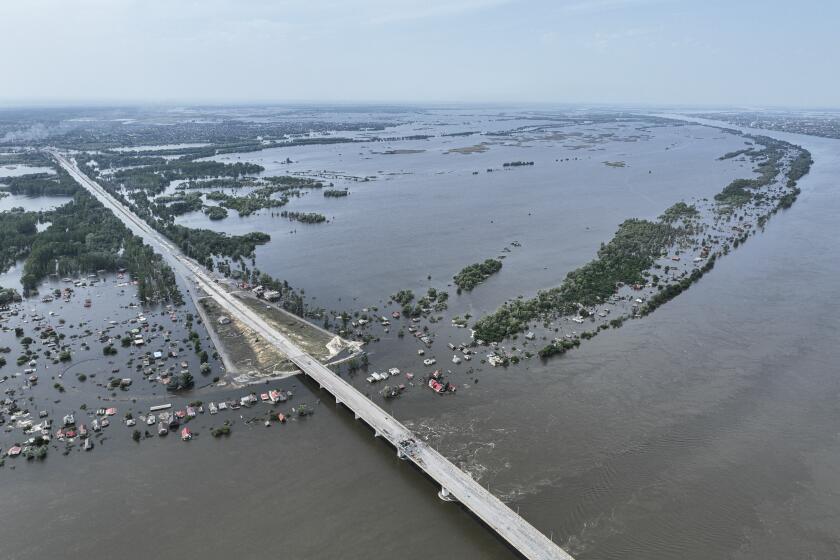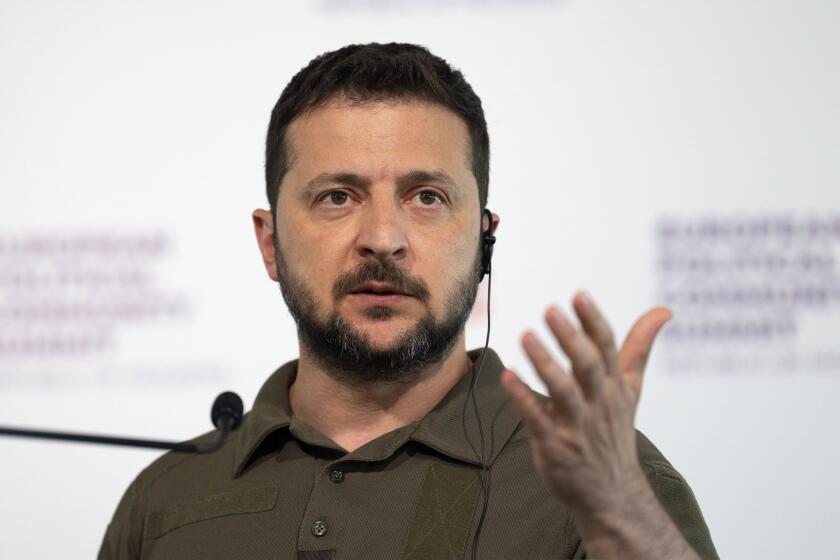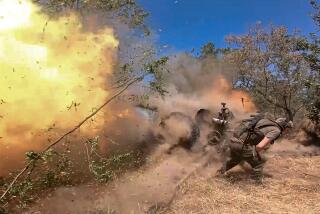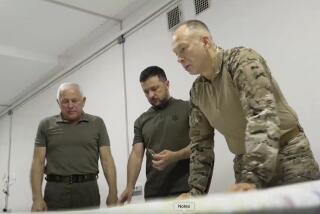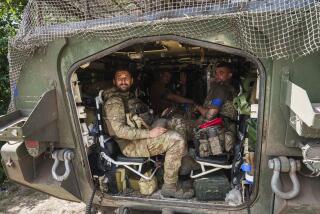Ukraine claims recapture of 7 villages in early stages of counteroffensive
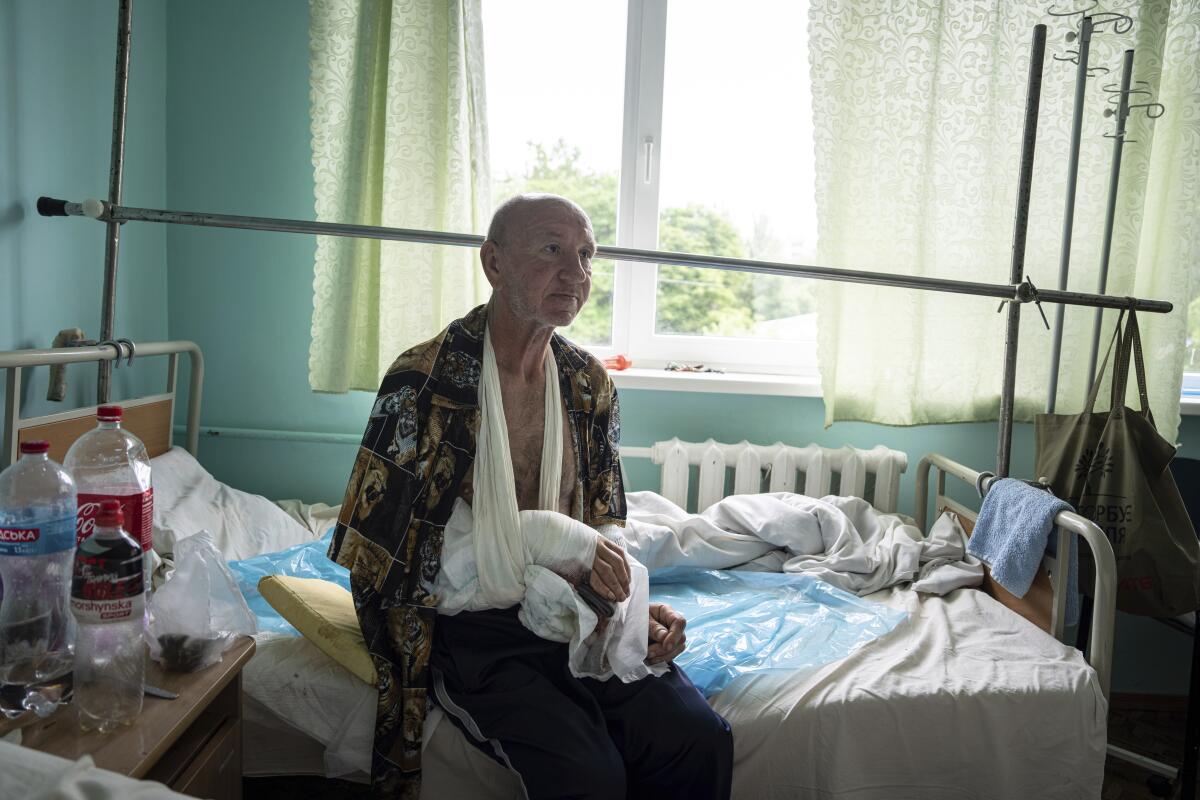
KYIV, Ukraine — Ukrainian troops have retaken seven villages spanning 35 square miles from Russian forces in the last week, the deputy defense minister said Monday as the early stages of Kyiv’s counteroffensive notched small successes.
Deputy Defense Minister Hanna Maliar wrote on the Telegram app that the Ukrainian flag was again flying over the village of Storozhov, in the eastern Donetsk province, and that her troops had also retaken three other nearby small villages and three in neighboring Zaporizhzhia province.
“The battles are tough, but our movement is there, and that is very important,” President Volodymyr Zelensky said in his nightly video address. He added that rainy weather is challenging his troops, and that he’s discussed with his military commanders “which points of the front we need to strengthen and what actions we can take to break more Russian positions.”
On Sunday, Ukrainian officials said their troops took the Donetsk villages of Blahodatne, Makarivka and Neskuchne — south of the town of Velyka Novosilka. Maliar reported Monday that the Zaporizhzhia province settlements of Lobkove, Levadne and Novodrivka were also now back under Ukrainian control.
Ukrainian President Volodymyr Zelensky says that counteroffensive and defensive actions are underway against Russian forces in the war.
Russian officials did not confirm Ukraine’s gains, which were impossible to verify and could be reversed in the to-and-fro of war. The gains amounted to only small bits of territory and underscored the difficulty of the battle ahead for Ukrainian forces, who will have to fight yard by yard to regain the roughly one-fifth of their country under Russian occupation.
Recent fighting on the western edge of the 600-mile front line has been complicated by a dam breach that sent floodwaters into a part of the Dnipro River separating the two sides.
Western analysts and military officials have cautioned that any effort to drive out entrenched, powerfully armed and skilled Russian troops will probably take months, and the success of any Ukrainian counteroffensive is far from certain.
French President Emmanuel Macron said in Paris that the Ukrainian counteroffensive began several days ago and “is set to be deployed over several weeks, if not months.”
Vladimir Rogov, an official with the Moscow-appointed administration of the Zaporizhzhia region at the western end of the front line, said “heavy battles” were raging in the area Monday involving Russian artillery, mortars and air power.
A grainy black-and-white video Russia issued as proof that it blew up a Ukrainian tank actually appears to show the destruction of a farmer’s tractor.
The villages are part of an area where the Russian front lines jut out into territory held by Ukraine. Though just over a mile deep, the protrusion has recently become one of several epicenters of intense fighting along the front line that cuts across southern and eastern Ukraine.
Capturing the villages is an incursion into the first line of Russian defenses and could allow Ukrainian forces to try a deeper thrust into occupied areas.
Russian forces control far less Ukrainian land than they did before a blistering Ukrainian counteroffensive last year that retook the northern city of Kharkiv and southern city of Kherson, among other places.
On Saturday, Zelensky said “counteroffensive, defensive actions are taking place” without specifying whether it was the all-out counteroffensive that has long been expected after a vast infusion of Western firepower and air defense systems into Ukraine. A day earlier, Russian President Vladimir Putin asserted that the counteroffensive had started and Ukrainian forces were taking “significant losses.”
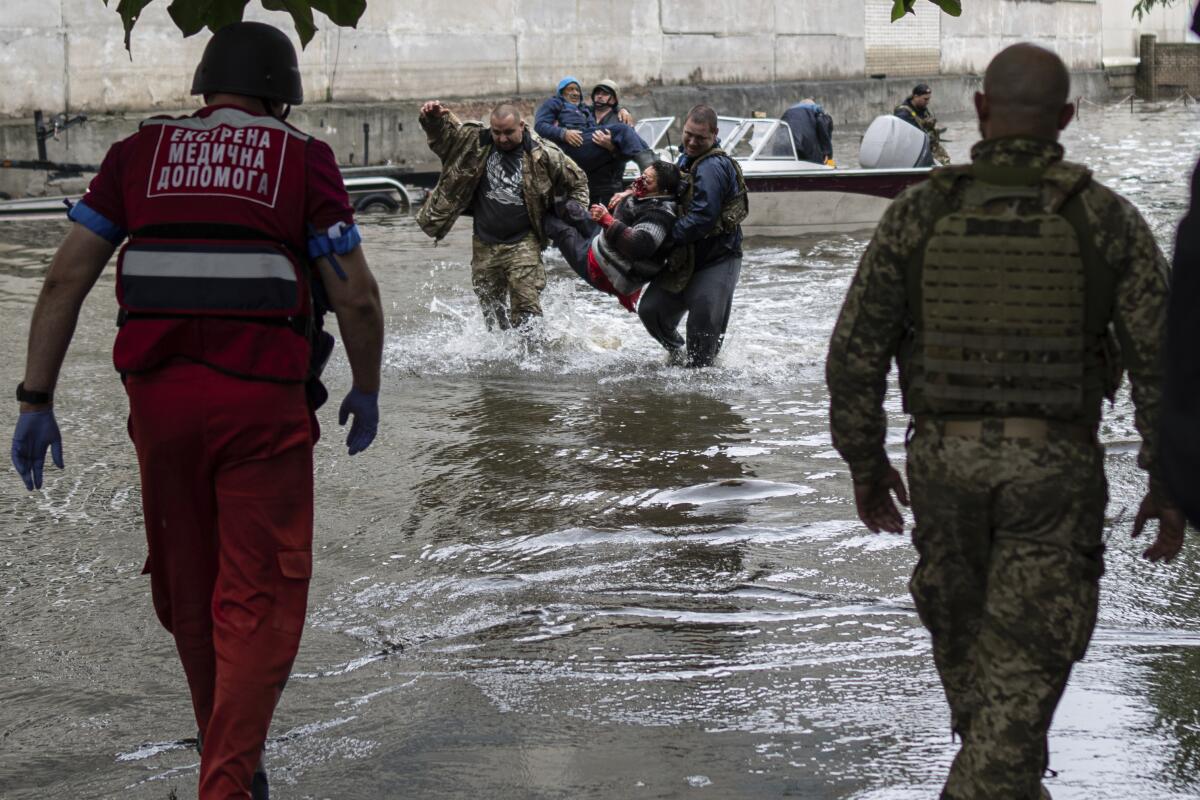
Ukrainian forces have focused on the Zaporizhzhia region and an area near the devastated city of Bakhmut, among other locations.
Russian authorities have said their troops are largely holding their ground.
The destruction of the Kakhovka dam in southern Ukraine is swiftly evolving into a long-term environmental catastrophe.
But Semyon Pegov, a prominent Russian military blogger who goes by the nickname WarGonzo, acknowledged that Russian troops had withdrawn from Blahodatne, Neskuchne and Makarivka, and said Ukrainian forces were trying to push forward along the banks of the Mokri Yaly River on Monday.
Alexandet Kots, a military correspondent for Russian daily Komsomolskaya Pravda, said Ukrainian forces were attempting to advance, despite heavy losses, toward the town of Staromlinovka, which sits on a strategic highway leading to the key city of Mariupol. Russian forces captured the Azov Sea port city more than a year ago, after Ukrainian forces held out for several months in a grueling and desperate defense.
Separately on Monday, the Ukrainian Defense Ministry said at least four civilians were killed and 16 others wounded by Russian shelling over the last 24 hours.
A 2-year-old was killed and at least 25 people were injured, including five children, in a Russian airstrike on Dnipro, Ukraine, according to President Volodymyr Zelensky.
In Donetsk, Russian shelling hit nine towns and villages and left one civilian dead and two others wounded. Donetsk Gov. Pavlo Kyrylenko posted images of apartment buildings and a cultural center damaged by Russian strikes in the town of Avdiivka.
In Kharkiv, to the north, Russian forces pummeled several settlements with artillery, mortar and rocket fire, injuring at least three people, regional state administration chief Oleh Sinegubov wrote on Telegram.
The reported Ukrainian advance comes as authorities on both sides of the front line along the Dnipro River in the southern Kherson region pressed on with rescue and relocation efforts for civilians driven from their homes by flooding from the breach of the Kakhovka dam last week.
With many homes and shops submerged in polluted river water, the United Nations and other aid groups say that access to fresh drinking water is a crucial need and that the possible spread of waterborne disease is a big worry. Thousands of people have been evacuated, though some remain.
Kherson Gov. Oleksandr Prokudin said Monday that water levels have been receding. They now average nearly 10 feet higher than normal. More than 32 towns and villages remain flooded, he said, and Russian forces have continued shelling inundated areas held by Ukraine on the river’s western bank.
On Sunday, Prokudin said three people were killed when Moscow’s troops opened fire at a boat evacuating people from Russian-occupied areas.
More to Read
Sign up for Essential California
The most important California stories and recommendations in your inbox every morning.
You may occasionally receive promotional content from the Los Angeles Times.
